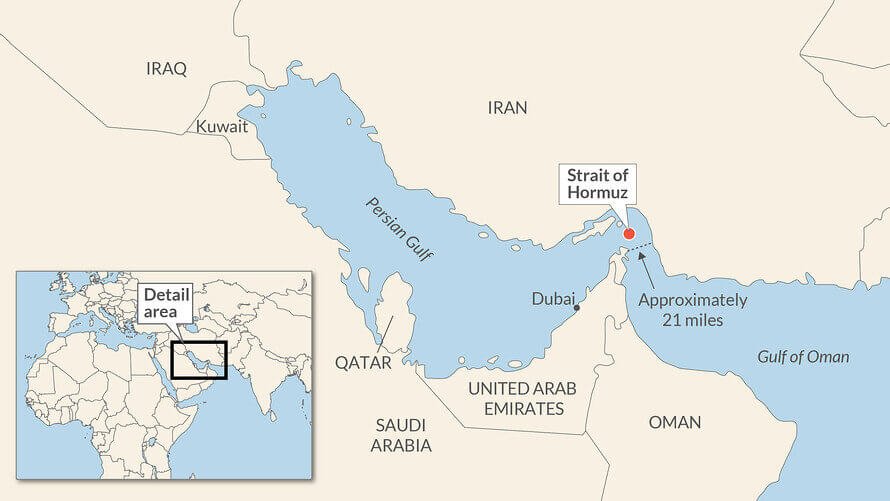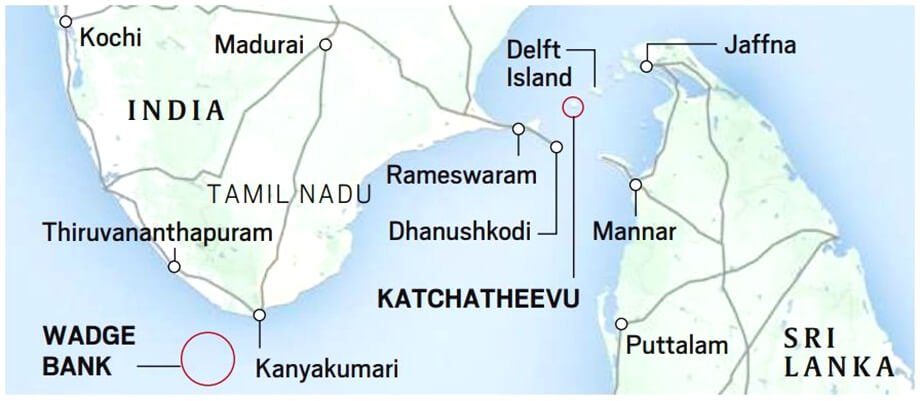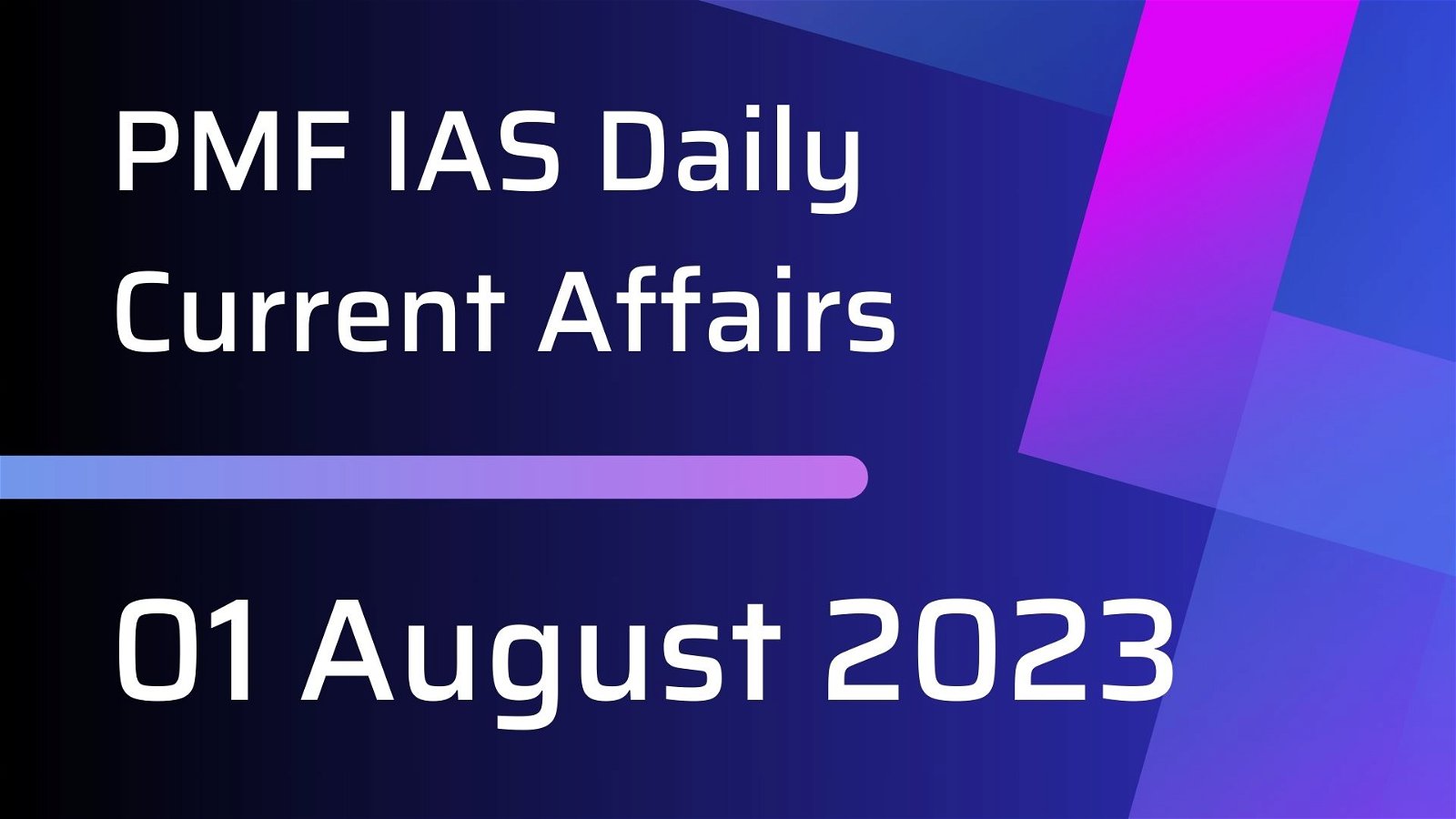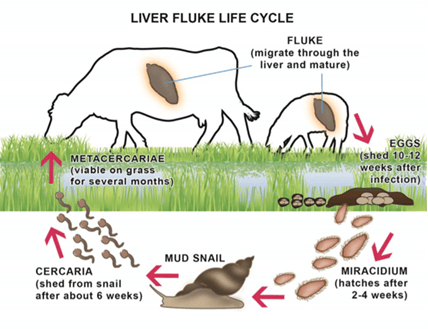
Current Affairs January 11, 2024: Medical Termination of Pregnancy (Amendment) Act, Scramble for the Sahel, Minority Status of Aligarh Muslim University, Panchayats Extension to Scheduled Areas Act, Inequality in India
Subscribers of "Current Affairs" course can Download Daily Current Affairs in PDF/DOC
Subscribe to Never Miss an Important Update! Assured Discounts on New Products!
Must Join PMF IAS Telegram Channel & PMF IAS History Telegram Channel
{GS2 – Governance – Laws} Medical Termination of Pregnancy (Amendment) Act
- Context (TH): The Delhi High Court has permitted a widow to terminate her 29-week pregnancy, though she had crossed the 24-week limit.
- The woman was going through “immense trauma” and was showing “suicidal tendencies” after the death of her husband.
- The court relied on a 2022 SC judgment, which held that “it is a woman’s prerogative to evaluate her life and arrive at the best course of action given a change in her material circumstances”.
Medical Termination of Pregnancy Act (MTPA), 2021
- The Medical Termination of Pregnancy Act (MTPAA) 2021 amended the MTP Act 1971 to increase the upper gestation limit for termination of pregnancy under certain conditions.
- “The MTPAA” was passed due to the advancement in medical science regarding safer abortions.
- The MTPAA expands access to safe and legal abortion services on therapeutic, eugenic, humanitarian and social grounds to ensure universal access to comprehensive care.
- MTP,1971, legalises abortion in India up to 20 weeks of pregnancy when provided by a registered medical practitioner (RMP) at a registered medical facility.
- A written Consent of a guardian is required for termination of pregnancy in two cases-
- When a woman is below the age of 18 years or
- When a woman has a mental illness (irrespective of her age).
- The MTP Act defines a guardian as someone who cares for the minor.
- This does not imply that only parent/s are required to consent.
Features of MTPAA,2021
- Termination due to Failure of Contraceptive Method or Device
- A pregnancy may be terminated up to 20 weeks by a married woman in the case of failure of a contraceptive method or device.
- It allows unmarried women to also terminate a pregnancy for this reason.
- Time limit and grounds for terminating a pregnancy
- The 1971 Act specifies the grounds and time limit for terminating a pregnancy.
- The MTPAA, 2021, amends these provisions.
- Upper Gestation Limit for Special Categories:
| Time Since Conception | Requirement for terminating Pregnancy | |
| MTP Act, 1971 | MTP (Amendment) Act, 2021 | |
| Up to 12 weeks | Advice from one RMP | Advice from one RMP |
| 12 to 20 weeks | Advice from two RMPs | Advice from one RMP |
| 20 to 24 weeks | Not allowed | Two RMPs for some categories of pregnant women |
| More than 24 weeks | Not allowed | Medical Board in case of substantial foetal abnormality |
| Any time during the pregnancy | If immediately necessary to save a pregnant woman’s life | |
- The Act Increases the upper gestation limit from 20 to 24 weeks for special categories of women.
- This includes survivors of rape, victims of incest and other vulnerable women (differently abled women, minors, among others).
- Medical Boards
- All state and UT governments will constitute a Medical Board.
- The Board will decide if a pregnancy may be terminated after 24 weeks due to substantial foetal abnormalities.
- The medical board is to provide a decision within three days of being approached.
- Confidentiality
- The “name and other particulars of a woman whose pregnancy has been terminated shall not be revealed” except to a person authorised in any law that is currently in force.
Key Issues and Analysis
- Different opinions on Termination
- Terminating a pregnancy is the choice of the pregnant woman and a part of her reproductive rights.
- Another opinion is that the state must protect life and, hence, provide for the foetus’s protection.
- Countries set varying conditions and time limits for allowing abortions based on foetal health and risk to the pregnant woman.
- Medical Board to decide termination only in some instances
- Countries set varying conditions and time limits for allowing abortions based on foetal health and risk to the pregnant woman.
- The Act allows for termination of pregnancy after 24 weeks only in cases where a Medical Board diagnoses substantial foetal abnormalities.
- This means for terminating pregnancies due to rape that have crossed the 24-week limit, there is no change in the process: the only recourse is to get permission through a Writ Petition.
- Categories of women who can terminate pregnancy between 20-24 weeks not specified
- The Act allows specific categories of women to terminate their pregnancies between 20 and 24 weeks.
- The GoI will notify these categories.
- The categories of women should be specified by Parliament and not delegated to the government.
- Unclear if transgender persons will be covered
- The Transgender Persons (Protections and Rights) Act, 2019, recognises transgender as an additional gender in India.
- There have been cases where persons who identify as transgender can become pregnant even after receiving hormone therapy to transition from female to male.
- Since the Act only provides for the termination of pregnancies in the case of women, it is unclear if transgender persons will be covered under the Bill.
- Issue related to “Viability of the foetus”- Ethical Issue
- Viability implies the period from which a foetus can live outside the womb; as technology improves, this ‘viability’ naturally improves.
- Currently, viability is usually placed at about seven months (28 weeks) but may occur earlier, even at 24. Thus, late termination of pregnancy may conflict with the viability of the foetus.
- Sex-selective abortion
- The preference for a male child keeps sex determination centres in business, which is illegal.
- There are concerns that a more liberal abortion law can aggravate this state of affairs.
Need for the MTPAA, 2021
- Before MTPAA, 2021, women seeking to terminate the pregnancy beyond 20 weeks had to face the cumbersome legal recourse, denying them reproductive rights.
- “This led to an increase in informal providers offering unsafe abortion services.”
- A 2015 study in the India Journal of Medical Ethics noted that 10-13% of maternal deaths in India are due to unsafe abortions, making unsafe abortions the third-highest cause of maternal deaths in India.
- The MTPA, 1971, lagged behind advancements in medical technology, allowing removal of a fetus at later stages of pregnancy.”
- Certain fetal genetic abnormalities can only be identified after 20-21 weeks. The previous law did not allow abortion in those circumstances.
Significance of MTPAA, 2021:
- The Bill will provide greater reproductive rights to women as abortion is considered an essential aspect of the reproductive health of women.
- Deaths and injuries from unsafe abortions are largely preventable, provided services are performed legally by trained practitioners.
- This will help in decreasing maternal morbidity and mortality.
- The Act also applies to unmarried women and, therefore, relaxes one of the regressive clauses of the 1971 Act.
Medical Termination of Pregnancy & Global PracticesUK
South Africa
USA
WHO
|
{GS2 – IR – Africa} Scramble for the Sahel
- Context (DTH): In the last decade, terrorism, insecurity and trafficking have characterised the region.
Sahel Region

- The word Sahel, or Sahil in Arabic, means coast or shore.
- The Sahel stretches from the Atlantic Ocean to the Red Sea.
- The Sahara Desert surrounds it in the north and the Savannah to the south.
- The Sahel region comprises 12 countries and houses 400 million people.
- Mali, Niger, Burkina Faso, Chad, and Mauritania form the G5 Sahel, the core of the Sahel region.
- A Sahel Security Pact was also signed between the countries recently.

Foreign interests: Reasons
- Richness in natural resources such as oil, uranium, natural gas, and lithium.
- The strategic location of the region in Africa.
- Economic interests of the countries involved in the scramble.
- Defence and security cooperation in the form of arms sales.
The Scramble
- The main actors in the scramble are the European Union, France, Russia, China, and the US.
France
- Most of the countries in the Sahel region were colonised by France.
- Now, France is often described as a ‘waning power’ in Africa.
- Vacuum, created by decolonisation, was taken over by Jihadis and insurgent groups.
- Operation Serval and later Operation Barkhane were launched to combat insurgents in the region.
- France declared a withdrawal of troops after anti-French demonstrations in Mali in 2021.
- Yet, France was reluctant to pull its military out of Mali, Burkina Faso and Niger.
- Moreover, France has the first right to buy any natural resources discovered in all its former colonies.
Russia
- The Cold War and colonial era brought Russia and Sahelian countries closer.
- Overemphasis by Western countries on human rights has pushed Sahelian countries closer to Russia.
- The invasion of Ukraine by Russia in 2022 necessitated allies in Africa.
- Wagner Group, the controversial private military company controlled by Russia, cooperates with some countries in the Sahel.
- Niger has cancelled its defence agreement with the EU and switched to Russia.
China
- China portrays itself as an alternative to the Sahelian countries’ traditional ally (France).
- It has depicted itself as a “partner” in the Sahel with “non-interference” and “respecting sovereignty”.
- Chinese state-owned enterprises operate in Niger, Chad, Mali and Burkina Faso.
- China is keen to test its arms products in the conflicts in the Sahel.
The United States
- The US has a strong military interest in the region due to its strategic location, specifically Niger.
- The US can carry surveillance and reconnaissance operations to cover the Sahel, west and central Africa.
- In 2019, the US opened its largest African drone base in Agadez, Niger.
- The U.S. is fulfilling the void created by the exit of France to prevent Russia and China from establishing a further military presence.
European Union (EU)
- The EU relies on Sahelian countries, especially Niger, to stop mass illegal immigration into the bloc.
- Niger is a significant transit country in the region.
- Niger had security and defence partnerships with the EU until recently.
Effects of Climate Change in the Sahel Region
|
{GS2 – Polity – IC – Minority} Minority Status of Aligarh Muslim University (AMU)
Foundations of AMU
- AMU’s origins can be traced back to the Madrasatul Uloom by Sir Syed Ahmad Khan in 1875 in Aligarh. It later evolved as Muhammadan Anglo-Oriental (MOA) College.
- It was to help Muslims overcome educational backwardness and prepare for government services.
- It imparted Western education as well as Islamic theology.
- MOA College was conferred university status by the AMU Act of 1920.
Significant Amendments in the AMU Act of 1920
- “Governor General of India” as “head” was replaced by “President of India” as “Visitor”.
- Non-Muslims were also allowed to join the University Court, earlier limited to only Muslims.
- Amendments reduced the authority of the University Court and increased the powers of the Executive Council of AMU.
- As a result, the Court essentially became a body appointed by the ‘Visitor’,i.e. President of India.
- These amendments were challenged in the S. Azeez Basha case (1967).
S. Azeez Basha case (1967)
- The petitioners argued that primarily Muslims established AMU and have the right to manage it.
- The court held that AMU was neither established nor administered by the Muslim minority.
- The court emphasised that AMU was established through a central Act to ensure the government’s recognition of its degrees.
- Additionally, the SC stated according to the 1920 Act, Muslims did not solely operate the university. Instead, its administration was entrusted to the Governor General and other statutory bodies.
- The court remarked that even the University Court, which had only Muslim members, was elected by an electorate that was not exclusively Muslim.
AMU Act Amendement 1981
- To pacify the country-wide protests, the amendment was introduced.
- It stated that the university was “an educational institution of their choice established by the Muslims of India” and “subsequently incorporated” as the AMU.
Resurgence of dispute
- The reservation of 50% of postgraduate medical courses for Muslims in 2005 was challenged in the Allahabad High Court.
- Allahabad HC overturned the reservation and nullified the 1981 Act.
- In 2006, various petitioners, including the Union government, appealed before the Supreme Court.
- Further, in 2016, the government decided to withdraw the appeal.
- In 2019, the matter was referred to the constitutional bench.
Provisions related to Minority Educational Institutions (MEI)
- Article 15(5): MEI are exempted from reservation provisions.
- Article 30(1)(a): All religious and linguistic minorities have the right to set up and administer educational institutions.
- The Right to Education Act requirement of 25% admission to economically backward students is not mandatory for MEI.
- St Stephens vs Delhi University case (1992): SC upheld 50% reservation for minorities in MEI.
- TMA Pai case (2002): MEI can have a separate and fair admission process with a separate fee structure but without capitation fees.
|
{GS2 – Polity – IC – Scheduled Areas} Panchayats Extension to Scheduled Areas Act
- Context (PIB): The Ministry of Panchayati Raj (MoPR) is organising a “Two-Day Regional Conference on Strengthening the PESA Act, 1996.
- Technical Sessions have been scheduled on the themes of-
- ‘Effectiveness of Gram Sabhas in PESA Areas, including their role in Ease of Living in these areas,’
- ‘Minor Forest Produce & Minor Minerals in PESA Areas,’
- ‘Role of Non-Government Stakeholders in Strengthening the implementation of PESA’.
- ‘Land Laws and Money Lending Laws in PESA Areas’
- ‘Enforcement of excise-related provisions in PESA areas’
- ‘Augmentation of Own Source Revenue (OSR) of PESA Panchayats’
- This Regional Conference aims to evaluate the progress of States in the implementation of PESA and its impact at the grassroots level.
- PESA is the cornerstone of tribal law in India, supporting self-governance and acknowledging traditional decision-making processes.
About PESA,1996
- PESA,1996, was enacted in response to the Bhuria Committee’s 1995 recommendations for tribal self-rule in India’s scheduled areas.
- This was passed to ensure that the scheduled area’s residents (not covered by the 73rd CAA) had access to self-government through Gram Sabhas.
- This act expands the provisions of Part IX to the Scheduled Areas of India.
- PESA grants the Gram Sabha absolute authority, ensuring their autonomy without higher-level interference.
- State legislature holds an advisory role in the operation of Panchayats and Gram Sabhas.
- The MoPR is primarily responsible for implementing PESA’s requirements in the states.
73rd CAA & Part IX of the IC
|
Objectives of PESA
- To create gram sabha as the centre of all operations by establishing participatory democracy in local governance.
- To give panchayats the precise power required to address tribal needs adequately.
- To stop panchayats at the higher level of the Gram Sabha from taking over the functions and power of panchayats at the lower level.
- To give tribal communities living in the Scheduled areas the traditional rights over natural resources.
- To affirm the right to self-govern through their forms of self-government.
- To create a proper administrative structure that complies with standard practices.
- To uphold and protect the ethnic communities’ traditions and customs.
Provisions of the PESA Act
- Under the Act, Scheduled Areas are those referred to in Article 244(1).
|
- Strengthening the administrative and financial capacities of panchayats in scheduled areas.
- Establishing mechanisms for conflict resolution and dispute settlement at the local level.
- The following powers & functions have been provided to the Gram Sabhas:
- Right to mandatory consultation in land acquisition, resettlement and rehabilitation of displaced persons.
- Protection of traditional beliefs and the culture of the tribal communities
- Ownership of minor forest products
- Resolution of the local disputes
- Prevention of land alienation
- Management of village markets
- Right to control production, distillation, and prohibition of liquor
- Exercise of control over money-lending
- Any other rights involving the Scheduled Tribes.
Significance of the PESA Act, 1996
- Democratic Decentralisation: PESA empowers gram sabhas to play a vital role in approving development plans and controlling all social sectors.
- While the 73rd Amendment first recognised the terms “gram” and “gram sabha”, PESA gave substance to self-government by delegating power and authority to them.
- Preserving Identity: The powers of gram sabhas include maintenance of cultural identity, control over schemes affecting the tribals, and control over natural resources within the area of a village.
- Conflict Resolution: The PESA Act thus enables gram sabhas to maintain a safety net over their rights and surroundings against external or internal conflicts.
- Public Watchdog: The Gram Sabha could monitor and prohibit the manufacturing, transport, sale, and consumption of intoxicants within their village limits.
- There are two corollaries to the PESA principle that is related to development, notably:
- Any society firmly entrenched in the richness of its culture and way of life can better comprehend progress and modernity.
- Only when a community is built upon the pillars of its culture and way of life can it handle progress and modernity.
- Funds: The Act allows transferring funds to the Gram Sabha and the Gram Panchayat to enable them to perform their functions.
- Land: The Act provides for the protection of the land rights of the tribal communities in the Scheduled Areas and requires that their consent be obtained before any land is acquired or transferred.
Issues and Challenges Related to the PESA Act
- Partial Implementation
- The states still need to modify the Panchayat Raj Act as mandated by PESA. Inadequate implementation has hindered self-governance in places like Jharkhand.
- Rajasthan still need to create the required PESA regulations.
- Chhattisgarh, Madhya Pradesh, and Odisha are among the states that have recently established the regulations for enforcing the act.
- Administrative Hurdles
- Factors include unclear provisions, legislative flaws, bureaucratic indifference, lack of political will, and resistance to changes in the power structure.
- The PESA Act can sometimes conflict with other laws, such as the Forest Rights Act and the Wildlife Protection Act, which can hinder its implementation.
- Followed in Letter Rather than Spirit
- Social audits have revealed that expansion plans were often authorised on paper without genuine discussions and decision-making in Gram Sabha meetings.
- Even in states where rules were formulated, compliance with them could have been better ensured.
- The GOI created additional legislative acts after PESA incorporated many features, diluting its relevance and intent.
- The absence of regulations and various factors have led to a decline in the spirit of PESA. It resulted in increased disputes.
- Gram Sabha-related Issues
- Despite being recognised as a traditional right under PESA, issues persist in the self-governance provisions of Gram Sabhas regarding:
- Customary resources,
- Minor forest products,
- Minor minerals,
- Minor water bodies,
- Beneficiary selection,
- Project approval,
- Control over local institutions, and
- Legality of taking over tribal lands.
- The powers and functions of the Gram Sabha vary across states as state legislatures have discretion in defining their duties and responsibilities.
- Many Gram Sabhas and Gram Panchayats lack trained personnel to perform their functions.
- Limited coverage
- The Act does not cover tribal communities in non-scheduled areas of the country and does not have access to its provisions.
Case Studies of Successful Implementation of the PESA Act
Chhattisgarh
- The state government has implemented the Act in several tribal-dominated districts and has seen positive results. In the district of Sarguja, gram sabhas (village councils) have successfully implemented afforestation and eco-restoration projects.
Andhra Pradesh
- The state government has set up a PESA Cell to monitor the Act’s implementation and provide technical and financial support to the Gram Sabhas.
India’s Tribal Policy
- In India, most tribes are collectively identified under Article 342 (1&2) as “Scheduled Tribes”.
- Part X of IC, The Scheduled and Tribal Areas – Article 244: Administration of Scheduled Areas and Tribal Areas.
- That is the Fifth and Sixth Schedules of the Indian Constitution.
- Panchayats (Extension to Scheduled Areas) Act, 1996 or PESA.
- The Tribal Panchsheel Policy
- Scheduled Tribes and Other Traditional Forest Dwellers (Recognition of Forest Rights) Act, 2006
- Protection of Civil Rights Act, 1955
Tribal Panchsheel Policy
- The Tribal Panchsheel Policy is the Five-Point Tribal Development Formula.
- It is a policy framework in India that promotes the welfare and development of tribal communities.
- Key principles of the Tribal Panchsheel Policy
- Protection: Ensuring the protection of tribal rights, culture, and identity.
- Participation: Facilitating the active participation of tribal communities. It is helpful in decision-making processes that affect them.
- Partnership: Encouraging partnerships between tribal communities and the government. To address their specific needs and challenges.
- Empowerment: Empowering tribal communities through education, skill development, and economic opportunities.
- Progress: Promoting inclusive and sustainable development in tribal areas, focusing on healthcare, infrastructure, and livelihood enhancement.
{GS3 – IE – Inclusive Growth} Inequality in India
- Context (IE): Income inequality in India has decreased due to a higher tax base (SBI’s Economic Research Department).
- The report also claims the idea of a K-shaped recovery is flawed.
K-shaped recovery
|
- Income inequality refers to the unequal income distribution among individuals or households in a particular society or economy.
- The Gini coefficient, derived from the Lorenz curve, is the most widely used measure of income inequality in a society.
Lorenz curve
Gini Coefficient
Gini Coefficient |
Status of income inequality in India
- According to Oxfam India (2023)
- Just 5% of Indians own more than 60%of the country’s wealth, while the bottom 50% of the population possess only 3%.
- Between 2012 and 2021, 40% of the wealth generated in India has gone to just 1% of the total population, and 3% of the wealth has gone to the bottom 50%.
- The Gini coefficient has increased from 0.32 in 1983 to 0.36 in 2019.

SBI’s Economic Research
- According to SBI’s Economic Research Department Income inequality has declined in India due to,
- Increased tax base
- Shift in taxpayers from lower-income to higher-income tax brackets.
- The transition of small firms into larger firms.
- The rising trend of ordering from platforms such as Zomato indicates declining inequality.
- Post-pandemic, the consumption of the bottom 90% population increased by Rs 8.2 lakh crore.
- The Gini coefficient for taxable income declined from 0.472 to 0.402 from FY14 to FY22.
- Female tax filers constitute around 15% of individual tax filers, with certain states like Kerala, Tamil Nadu, Punjab, and West Bengal having a higher share.
Major factors contributing to income inequality in India
- Tax policy: high indirect taxes on Goods and services impact the poor and the well-off equally.
- Rural-Urban Divide: Limited diversification of rural economies contributes to income gaps.
- Wealth Concentration: in the hands of a few individuals or families (OXFAM report).
- Informal Labor Market: job insecurity and lack of social security contribute to income disparities compared to the formal sector.
- Globalization: while it can create economic opportunities, it may also lead to job displacement and income inequality.
- Land Ownership: Unequal land distribution, with large landholdings held by a few.
- Non-remunerative Agriculture: Agriculture, a primary source of income in rural areas, offers lower returns than urban industries.
- Historical inequalities based on caste continue to impact access to education, employment, and economic opportunities.
Suggestions to reduce income inequality
- Additional tax on the wealth of the richest 1%: 2% wealth tax and a 33% inheritance tax on the top 1% of our population will fetch an estimated ₹11 lakh crore per annum. (Jan Sarokar)
- Expand the Earned income tax by implementing a tax credit system for poor & marginalized: E.g, a tax credit for low-income individuals could be used to offset the costs of GST.
| Tax credits are a form of direct financial assistance to individuals and families designed to offset the cost of taxes. |
- Improving access to education and health along with other public services.
- Strengthening people’s collective bargaining: it allows labour to receive a greater share of productivity gains as wages.
- Provide a floor of social security: For example, Employment guarantee schemes, increase in minimum wages, and universal basic income.
- Employment Generation by promoting the labor-intensive manufacturing sector.
{Prelims – Sci – Chemistry} Chlorine Gas
- Context (TH): Chlorine gas leak in the Jhajhra area of Dehradun.
- Chlorine is a yellow-green gas at room temperature.
- Chlorine has a pungent, irritating odour that is detectable at low concentrations.
- The density of chlorine gas is greater than air, which will cause it to initially remain near the ground in areas with little air movement.
- Chlorine is not flammable but may react explosively or form explosive compounds with many common substances (including acetylene, ammonia, natural gas, and hydrogen)
- Chlorine is slightly water soluble and reacts with moisture to form hydrochloric acid (HCl).
- Chlorine is commonly pressurized and cooled for storage and shipment.
- It is produced commercially by electrolysis of sodium chloride brine.
- Chlorine is used in industry and household cleaning products.
- Chlorine was also the first poison gas to be used as a weapon during World War I.
- Chlorine ions help regulate osmotic pressure and help us digest food.
- Chlorine atoms can destroy ozone molecules, severely depleting the stratospheric layer.




![PMF IAS Environment for UPSC 2022-23 [paperback] PMF IAS [Nov 30, 2021]…](https://pmfias.b-cdn.net/wp-content/uploads/2024/04/pmfiasenvironmentforupsc2022-23paperbackpmfiasnov302021.jpg)













